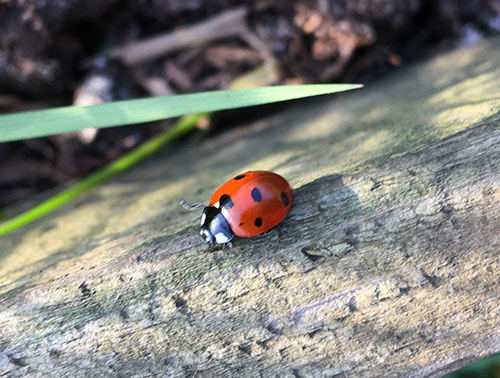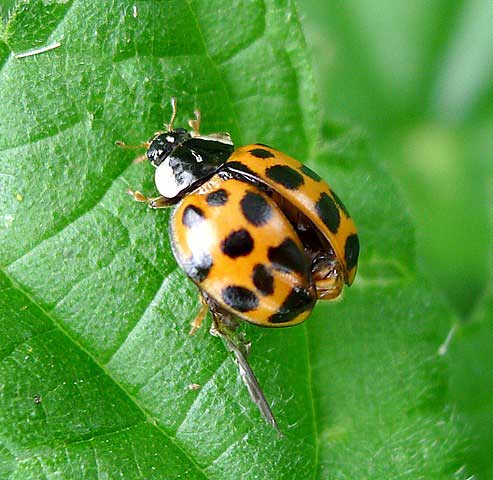Illustration © nic-nic 2019
Pest or guest of the month
|
This monthly selection offers a description of some of Warriston's beasty and 'beastly' inhabitants and advice on how to live with them organically. Find more in our Pest or Guest archive |
June 2019—A Loveliness of Ladybirds
Ladybirds are widespread beetles boasting an impressive 5000+ species around the world. They are considered good luck in many cultures so Warriston plot holders may be in for a share of good gardening fortune in 2019, with many noticing large numbers on their plots. This might be due to favourable weather conditions earlier this year and a sizzling 2018. Ladybirds prefer warm, dry and sunny conditions.
The collective noun for ladybirds is 'loveliness'. Popular with many gardeners due to their bright as a button appearance and ability to keep aphids at bay, a single seven-spot ladybird Coccinella septempunctata can consume more than 5000 aphids in its brief 12 month lifespan. With a sufficient supply of aphids for sustenance a female can lay up to 2000 eggs. This all adds up to some mighty aphid-busting power so the ladybird is a welcome guest on any plot. Ladybirds may appear lovely to humans but their striking appearance is designed to make them memorable to any predators foolish enough to try and eat them. Ladybirds ooze a nasty alkaline fluid from their leg joints if threatened. This unpalatable goo means that any predators that do manage a nibble are likely to keep them off their menu in future. Another tactic in the ladybird's survival kit is to 'play dead'. You might notice this behaviour if you come across them whilst weeding your plot. What may appear to be a ladybird husk, legs resolutely folded out of sight, will reveal itself to be alive and kicking once it senses danger has passed. Harlequin ladybirds Harmonia axyridis are a non-native species that arrived in 2004 having been introduced as a biological control agent. The harlequin is notable for its variable range of bright colours and markings (like the yellow one pictured here) and is regarded as one of the world's most invasive insects. It isn't considered desirable or necessary to attempt to control this species in your garden, so you can just leave them to feast on aphids while you tend to your plot. Some ladybird links: |

Seven-spot ladybird at Warriston Coccinella septempunctata
Photo Credit: NM 
Harlequin Ladybird - Harmonia axyridis
Photo Credit: By gailhampshire from Cradley, Malvern, U.K |


